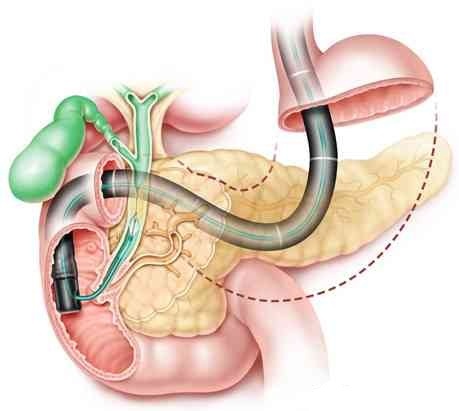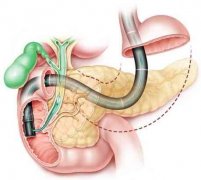 一项前瞻性多中心的临床实验:积极的静脉输注乳酸林格氏液预防ERCP术后胰腺炎
一项前瞻性多中心的临床实验:积极的静脉输注乳酸林格氏液预防ERCP术后胰腺炎
摘要
背景及意义:本实验旨在研究降低ERCP术后胰腺炎发生率,乳酸林格氏液是最合适输液类型。
数据及方法:本实验是一项前瞻性的多中心的研究,我们将经历过一次ERCP的高风险的病人平均分为三组,积极乳酸林格氏液组为(ERCP术中给予3mL/kg/h静点,术后单次给予20mL/kg静点,术后8小时给予3 mL/kg/h静点),正常生理盐水组,标准乳酸钠林格氏液组(ERCP术中及术后均给予1.5 mL/kg/h静点),最终观察ERCP术后胰腺炎的发生率。
结果:395个患者纳入数据组,385个患者签署同意书,三组之间在人口统计学特点方面没有统计学意义,在积极乳酸林格氏液组之间,旨在治疗ERCP术后胰腺炎发生率的目的上有显著的差异(3.0%,95%CI置信区间为0.1%-5.9%;4/132),正常生理盐水组之间(6.7%,95%CI,10.9%-10.9%;9/134)和标准乳酸林格氏液组之间(11.6%,95%CI 6.1%-17.2%;15/129;P = 0.03)。在积极乳酸林格氏液组相比标准的乳酸林格氏液组,ERCP术后发生率明显低于标准的乳酸林格氏液组(相对风险RR 0.26,95%CI 0.08-0.76;P = 0.008)。在正常生理盐水组相比于标准乳酸林格氏液组没有明显统计学意义(RR 0.57, 95 %CI 0.26 – 1.27; P = 0.17)。
结论:在预防ERCP术后考虑高风险发生胰腺炎的患者,积极输注乳酸林格氏液是最合适输液类型。
总结:举例,一个70Kg患者,为预防ERCP术后胰腺炎,推荐术中输注乳酸林格氏液按ERCP术中给予3mL/kg/h静点,术后单次给予20mL/kg静点,术后8小时给予3 mL/kg/h静点(标准一瓶为500ml,操作时间为30min推荐液体量105ml,1h推荐液体量210ml,2h推荐液体量420ml)。然后再单次给予1400ml乳酸林格氏液(8h内),术后8小时,以3 mL/kg/h维持。
Aggressive intravenous hydration with lactated Ringer’s solution for prevention of post-ERCP pancreatitis: a prospective randomized multicenter clinical tria
Abstract
Background and study aims: The present study aimed to determine the type of intravenous hydration that is best suited to reducing the incidence of post-endoscopic retrograde cholangiopancreatography (ERCP) pancreatitis.
Patients and methods: In a prospective randomized multicenter trial, average-to-high risk patients who underwent first-time ERCP were randomly assigned to three groups (1:1:1) who received: aggressive intravenous hydration (3 mL/kg/h during ERCP, a 20-mL/kg bolus and 3 mL/kg/h for 8 hours after ERCP) with either lactated Ringer’s solution (LRS) or normal saline solution (NSS), or standard intravenous hydration with LRS (1.5 mL/kg/h during and for 8 hours after ERCP). The primary end point was post-ERCP pancreatitis (PEP).
Results: 395 patients were enrolled, and 385 completed the protocols. The three groups showed no significant differences in demographic characteristics. There was a significant difference in the intention-to-treat (ITT) PEP rate between the aggressive LRS group (3.0 %, 95 % confidence interval [CI] 0.1 % – 5.9 %; 4 /132), the aggressive NSS group (6.7 %, 95 %CI 2.5 % – 10.9 %; 9 /134) and the standard LRS group (11.6 %, 95 %CI 6.1 % – 17.2 %; 15 /129; P = 0.03). In the two-group comparisons, the ITT PEP rate was significantly lower for the aggressive LRS group than for the standard LRS group (relative risk [RR] 0.26, 95 %CI 0.08 – 0.76; P = 0.008). There was no significant difference in the ITT PEP rate between the aggressive NSS group and the standard LRS group (RR 0.57, 95 %CI 0.26 – 1.27; P = 0.17).
Conclusion: Aggressive hydration with LRS is the best approach to intravenous hydration for the prevention of PEP in average-to-high risk patients.
翻译:张卫 审校:张立超 侯森林 (Endoscopy 2018)


